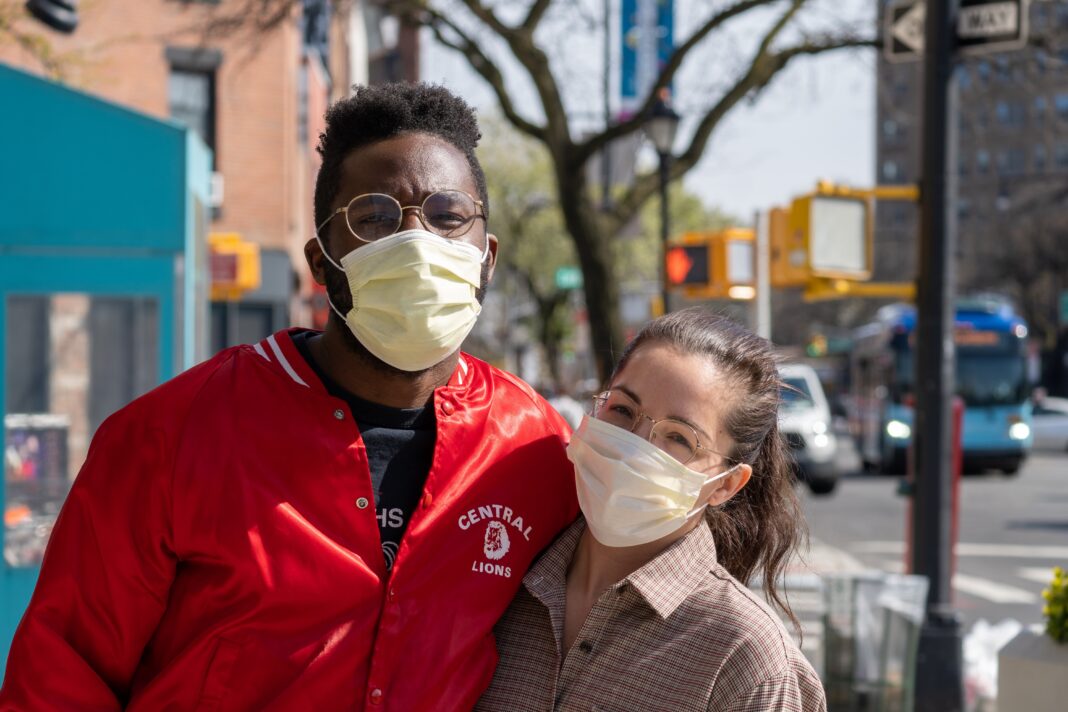
Dating is never easy, and trying to stay six feet away from other humans makes it much more difficult. College students attempting to date during the COVID-19 pandemic face the challenge of figuring out how to safely meet people.
A new college survey of 1,000 undergraduates finds that a majority (70%) have been single at some point during the COVID-19 pandemic. Almost one-quarter (24%) of students who have been single during the pandemic say they’re dating less than they did before, while 69% are dating about the same amount.
“I’m single and ready to mingle — at a six-foot distance, with a mask, and constantly putting on hand sanitizer,” says a student from the University of Texas at El Paso.
With most things moving online, 1 in 5 (20%) students say they’re spending more time on dating apps. However, 19% say they’re spending less time on dating apps and 61% say they’re spending about the same.
Students’ feelings about trying to date during the pandemic are mixed. One in 10 (10%) single students have decided not to date during the pandemic, while 32% say they’ll date as safely as they can and 19% say they’ll date normally. About one-third (32%) didn’t date before the pandemic and will continue to not date. Male students are more likely than female students to say they’ll date normally during the pandemic (30% vs. 11%).
Male Students are More Likely to Date Normally During COVID-19
What’s been your philosophy when it comes to dating during a pandemic?
A majority (67%) of students who have been single at some point during the last year haven’t been on any dates. Roughly 1 in 6 have met most of their dates outdoors (16%) or had indoor dates at home (14%), compared to just 7% who have had mostly virtual dates.
“It’s weirdly complicated and very sad because dating doesn’t really exist during the pandemic, especially because I’m at home with my parents who I do not want to get sick,” a Tulane University student says.
Before having sex with a new partner during the pandemic, about half of single students think it’s necessary to ask about day-to-day COVID-19 safety measures (48%), ask who else they’re dating (45%), and/or ask them to get tested (45%).
Even with all the struggles of trying to date right now, 20% of single students say they have had sex with a new partner during the pandemic. Students who have slept with a new partner are less likely to say they actually took precautions beforehand. Nearly 4 in 10 (37%) say they asked a new sexual partner about day-to-day COVID-19 safety measures, while 26% took a COVID-19 test, and 23% asked their partner to get tested.
One-Quarter of Students With a New Partner Got Tested Before Sex
Percentage of students who have had sex with a new partner during COVID-19 and took the following precautions beforehand.
Almost 1 in 5 (19%) students have had their relationship status change since the pandemic began. Of those, 54% started a new relationship, 51% ended a relationship, and 4% got married. LGBTQ students are more likely than straight students to have ended a relationship (60% vs. 47%) and less likely to have started a new relationship (39% vs. 61%).
Among students overall who had a relationship end, about 4 in 10 say seeing each other less (39%) and experiencing mental health issues (36%) due to COVID-19 contributed to the breakup. Over the course of the pandemic, a majority of students have consistently reported experiencing negative mental health effects. However, female students are more likely than male students to say the pandemic is negatively affecting their mental health (75% vs. 54%).
In October, almost half (48%) of students said they felt lonely nearly all of the time or a lot of the time over the previous month. Female students are also more likely than male students to report feeling lonely a lot or all of the time (51% vs. 41%). And LGBTQ students are more likely than straight students to say the same (60% vs. 42%).
___________________________
Methodology: This survey was designed and conducted by College Pulse. Interviews were conducted in February among a sample of 1,000 full-time and part-time students attending colleges or universities in the U.S. who are part of College Pulse’s American College Student Panel.




